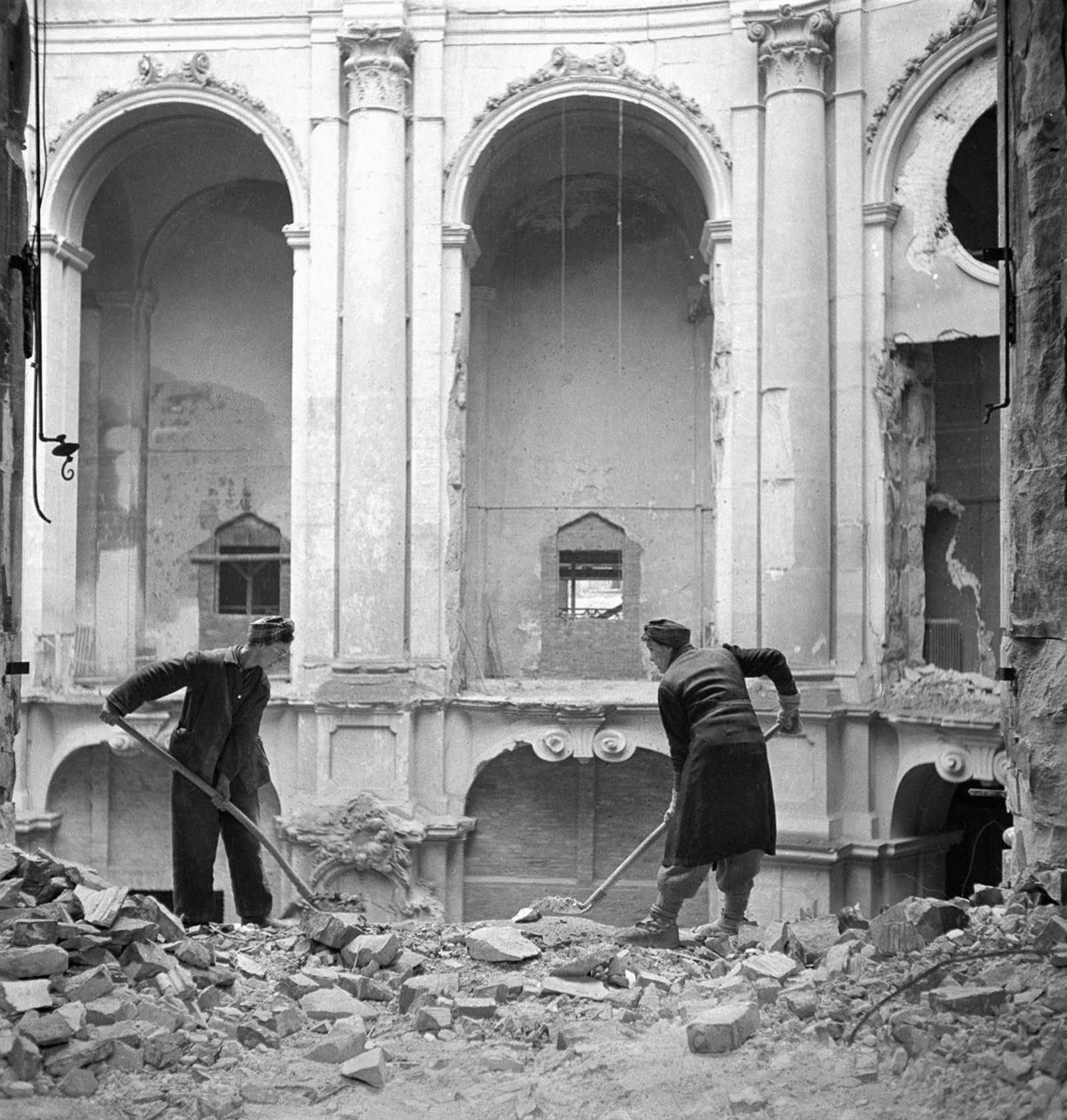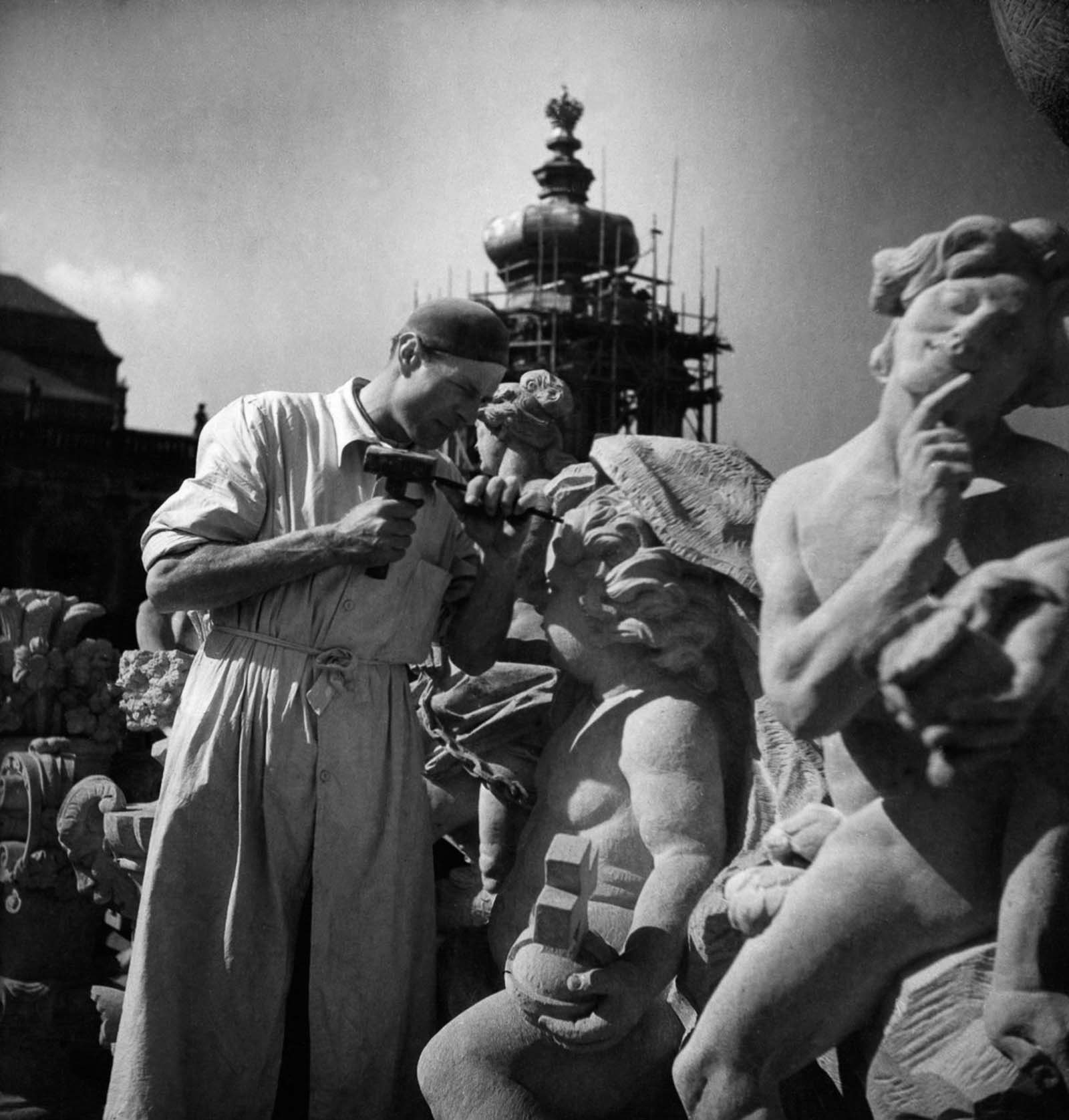Dresden was the capital of the state of Saxony, situated on the Elbe River. It was a cultural center, containing famous landmarks as the Frauenkirche, and was dubbed the Florence of the Elbe. Population of the city was largely anyone’s guess as refugees flooded into the city shortly prior to the bombing as Soviet troops advanced to the city’s east, however common estimates put the population at the time of bombings at greater than 650,000. Early in 1945, Allied commanders gathered to plan Thunderclap, a new plan to strategically bomb Germany, particularly to aid the advance of Soviet troops. They argued that carpet bombing of large cities in eastern Germany would allow Soviet troops to exploit the confusion that would ensue, hampering movement of German troops from west of the target cities. On 27 Jan 1945, Given the Allied Joint Intelligence Command’s conclusion that the Germans could reinforce the Eastern Front with half a million men (up to 42 divisions), Sir Archibald Sinclair of the RAF sent Churchill the recommendation of bombing Berlin, Dresden, Chemnitz, Leipzig, or other large cities with available resources, in order to hinder efficient enemy movement should such a reinforcement be ordered by Berlin. The bombing of Dresden started during the night of 13-14 February when 796 British Lancaster and 9 Mosquito aircraft were displaced and dropped 1478 tons of high explosive and 1182 tons of incendiary bombs on the first bombing run and 800 tons of bombs on the second run. The incendiary bombs contained combustible chemicals such as magnesium, phosphorus, or petroleum jelly/napalm. There were claims that due to the extreme temperatures inside buildings caused by the tremendous fires, air currents were formed where people fleeing would be sucked into the burning buildings. Three hours later, 529 Lancaster bombers dropped 1800 tons of bombs. On the next day, 311 American B-17 bombers dropped 771 tons of bombs while the escort Mustang fighters strafed traffic (no distinction between military and civilian) on the streets to cause further havoc. Margaret Freyer, a Dresden resident, recalled: The firestorm is incredible, there are calls for help and screams from somewhere but all around is one single inferno. To my left I suddenly see a woman. I can see her to this day and shall never forget it. She carries a bundle in her arms, it is her baby. She runs, she falls, and the child flies in an arc into the fire…. Insane fear grips me and from then on I repeat one simple sentence to myself, ‘I don’t want to burn to death’. Lothar Metzger, another Dresden resident who was only nine years old at the time, recalled: We did not recognize our street anymore. Fire, only fire wherever we looked. Our 4th floor did not exist anymore. The broken remains of our house were burning. On the streets there were burning vehicles and carts with refugees, people, horses, all of them screaming and shouting in fear of death. I saw hurt women, children, old people searching a way through ruins and flames…. All the time the hot wind of the firestorm threw people back into the burning houses they were trying to escape from. I cannot forget these terrible details. I can never forget them. The bombing methods used by the Allied were to encourage total destruction of buildings: the high explosive bombs first exposed the wood frames of buildings, then the incendiary bombs ignited the wood, and finally followed by various explosives to hamper the firefighting efforts. The results were devastating. 24,866 out of 28,410 houses in the inner city of Dresden were destroyed, many of them schools, hospitals, and churches. Estimates of deaths range from 25,000 to more than 60,000 (the official German report stated 25,000 estimated with 21,271 registered burials). Once World War Two ended, the Dresden’s survivors began the daunting task of cleaning and rebuilding their city. The volunteers spent years clearing the rubble by hand and carting it away. Many of the city’s important historic buildings were reconstructed, including the Semper Opera House and the Zwinger Palace, although the city leaders chose to rebuild large areas of the city in a “socialist modern” style, partly for economic reasons, but also to break away from the city’s past as the royal capital of Saxony and a stronghold of the German bourgeoisie. Some of the ruins of churches, royal buildings and palaces, such as the Gothic Sophienkirche, the Alberttheater and the Wackerbarth-Palais, were razed by the Soviet and East German authorities in the 1950s and 1960s rather than being repaired. The Frauenkirche church, arguably the city’s centerpiece, didn’t get completely rebuilt until some 60 years after the war. Compared to West Germany, the majority of historic buildings were saved. (Photo credit: Ullstein Bild / Keystone Features/ Hulton Archive / Getty Images / ww2db.com). Notify me of new posts by email.
Δ Subscribe
























